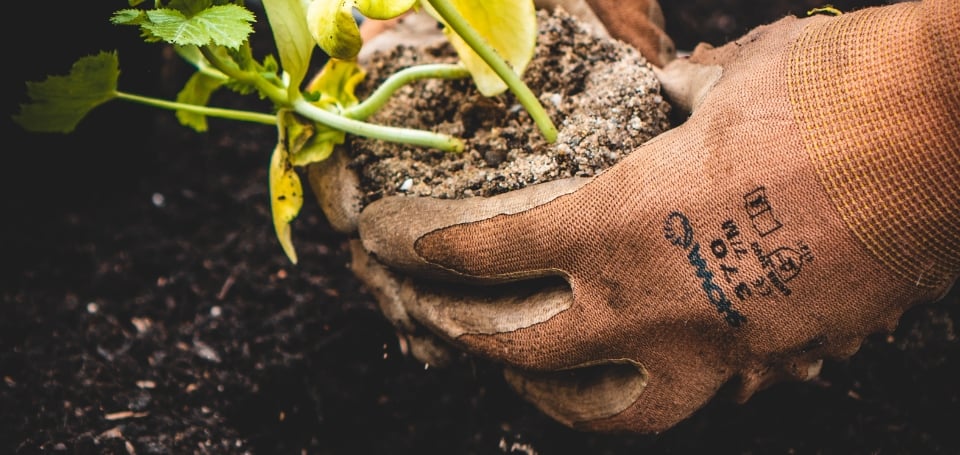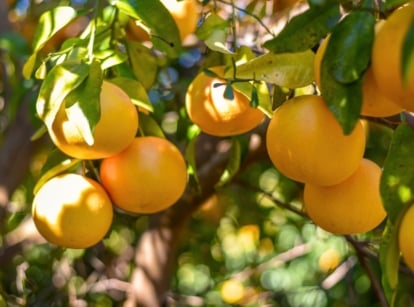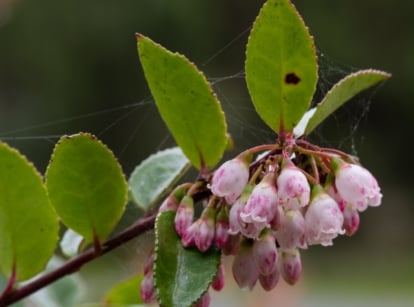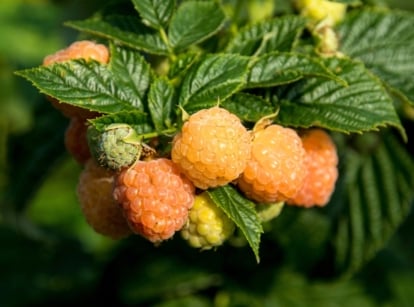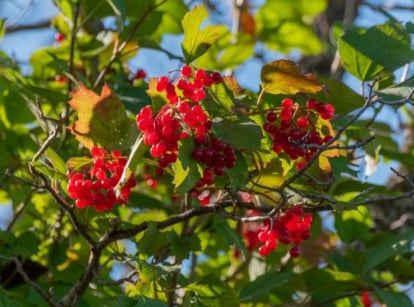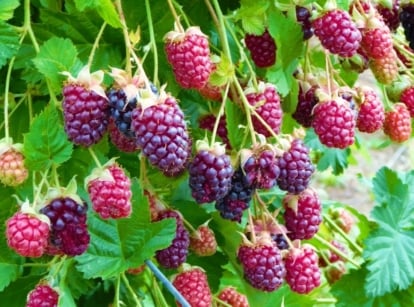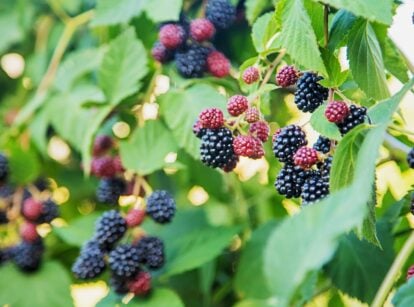11 Berry Bushes You Can Plant in Early Spring
If you need more sweet and delicious fruit in your life, berry bushes are a fast way to make that happen. Gardening expert Melissa Strauss shares some spring-planted shrubs that produce the sweetest, juiciest fruits around!
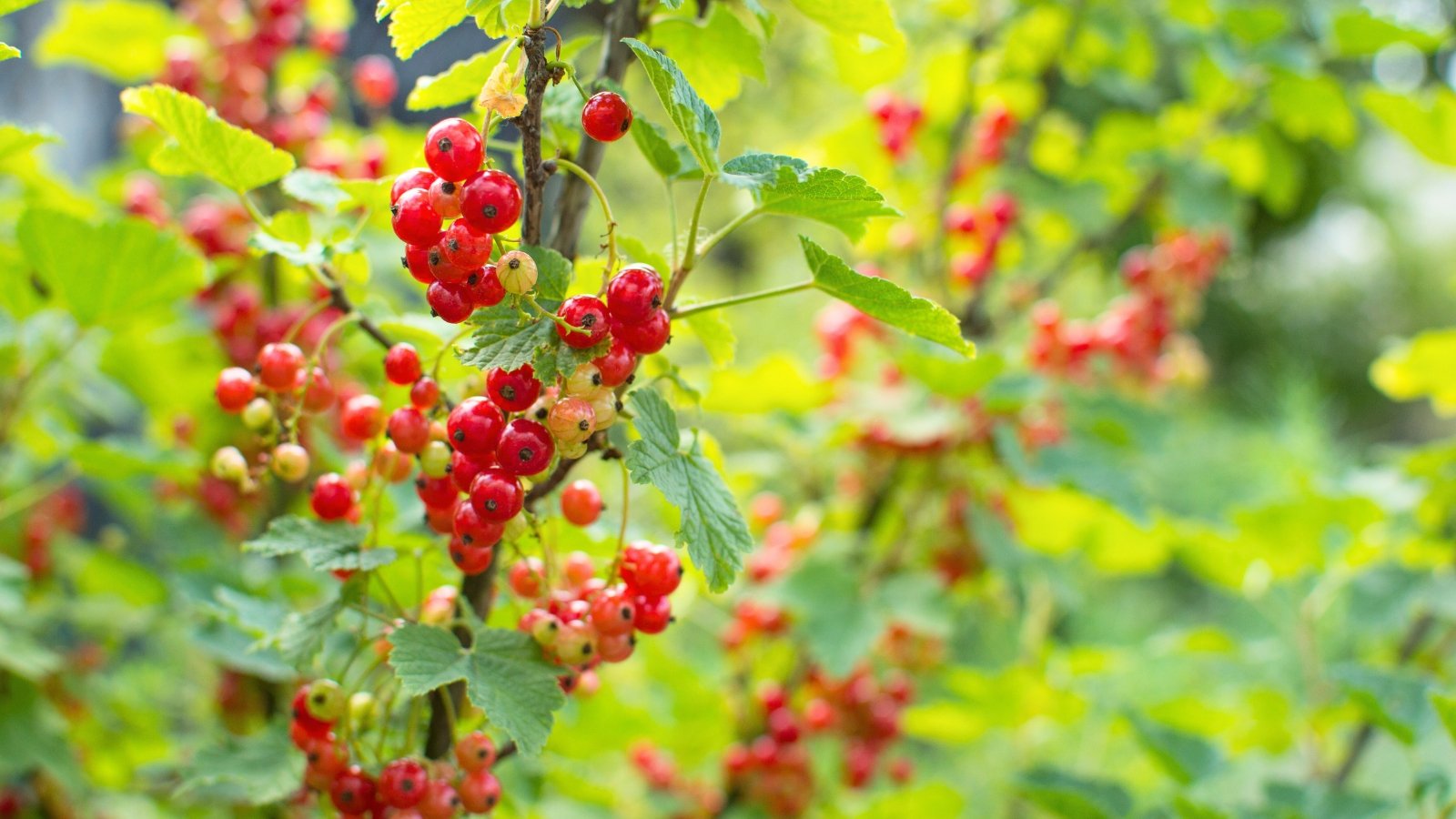
Contents
Is there anything that says summer more than a bowl of ripe berries straight off the bush? Well, maybe a watermelon, but it gets second place for certain. These super nutritious fruits are easy to grow and present significant savings over ever-increasing grocery store prices.
Spring is the ideal time for planting berry bushes. Though they come in different shapes and sizes, they have plenty of things in common. While you’re ok to plant them in the fall, there is no time like the present to get them in the ground and enjoy their sweet fruits this summer.
Whether you’re using a planner to design a stunning berry patch or just want a useful container plant, these are all great cultivars to choose from. Many of them make beautiful ornamentals, as well. Here are the best berry bushes to plant this spring.
Duke Blueberry
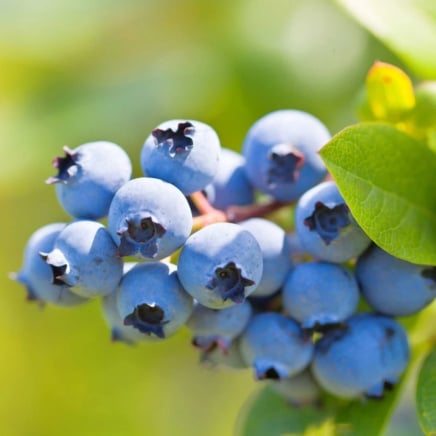
- Early-Ripening and Prolific Yields
- Compact Size
- Cold-Hardy
- Chill Hour Requirements
- Grown from Propagated Cuttings
Blueberry ‘Duke’
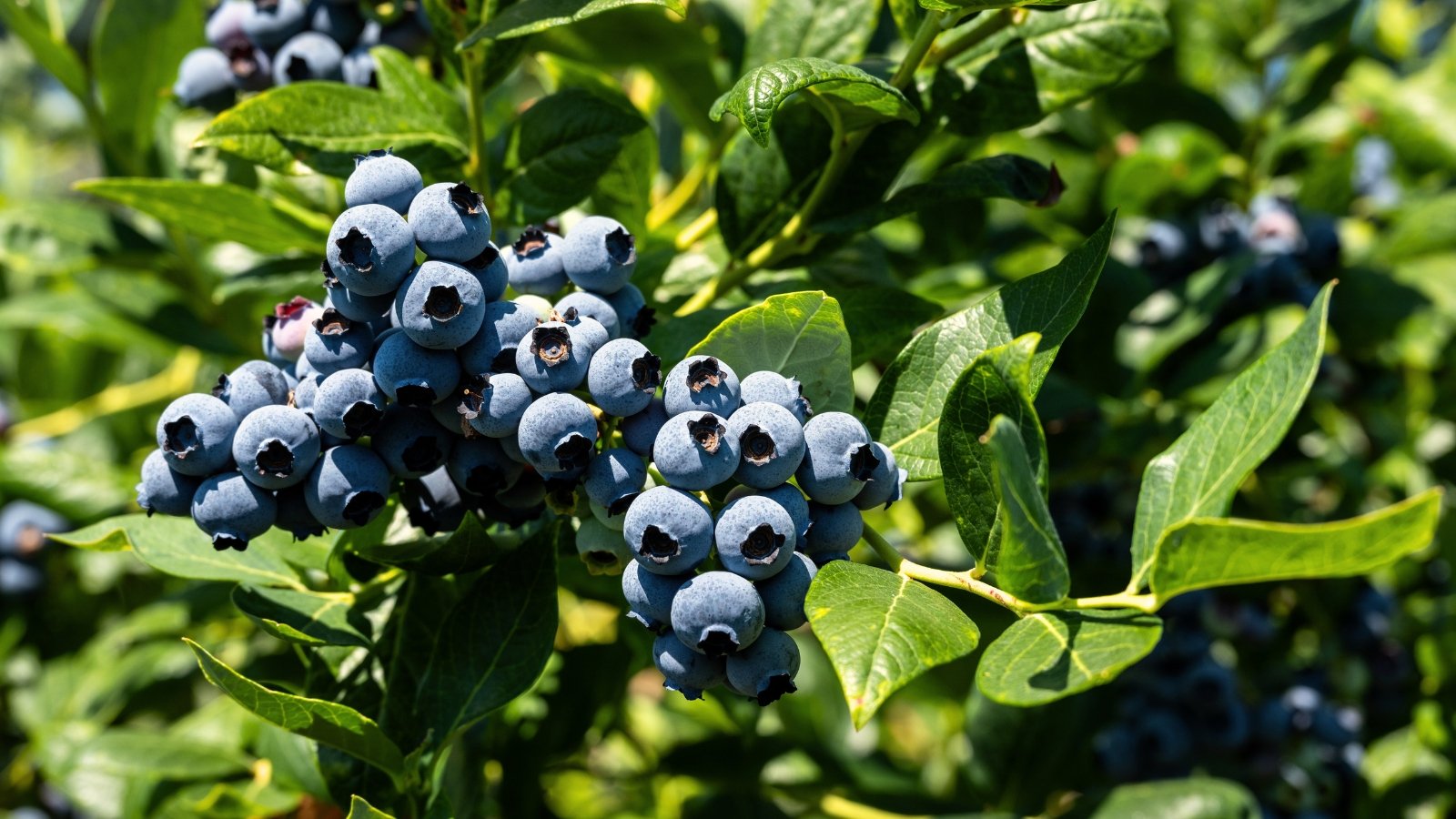
|
|
botanical name Vaccinium corymbosum ‘Duke’ |
|---|---|
|
|
sun requirements Full sun |
|
|
height 5’-6’ |
|
|
hardiness zones 4-7 |
Blueberries are good for more than making cobblers. These little nutritional powerhouses are chock-full of anthocyanins, which give them their blue color. Anthocyanins are powerful antioxidants that help protect your cells.
Studies show that adding this fruit to your diet can be beneficial in many ways. From improved muscle recovery to protecting against heart disease and type 2 diabetes, they have a ton of health benefits.
‘Duke’ is great for cooler climates. It bears fruit early, so it doesn’t require a long growing season. It does need 800 hours of chill time, so its range doesn’t extend south as far as some varieties. These blues are big with a sweet and tangy flavor. The shrubs can reach six feet tall at maturity and make a fantastic and useful hedge.
Raspberry ‘Brandywine’
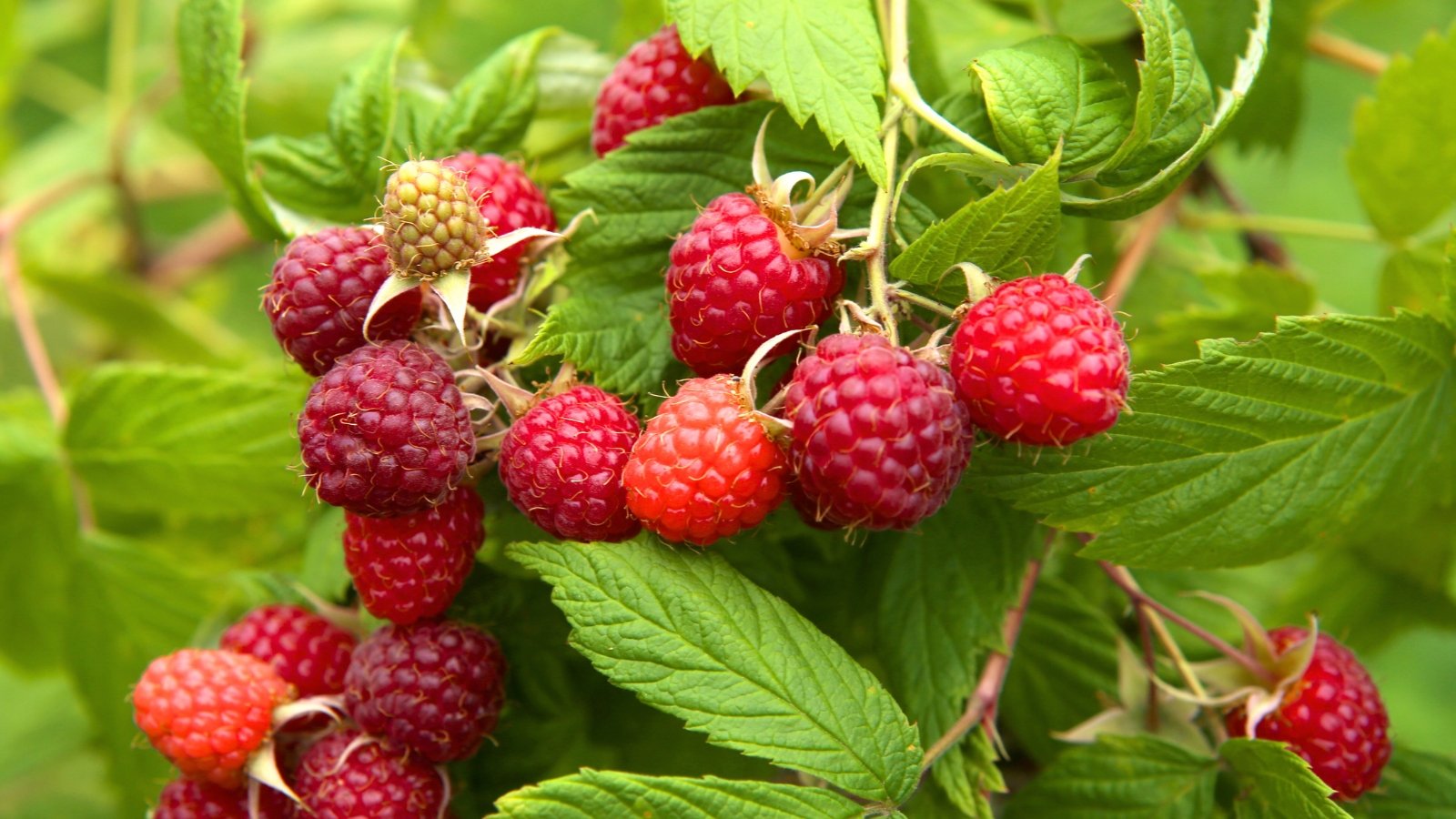
|
|
botanical name Rubus idaeus ‘Brandywine’ |
|---|---|
|
|
sun requirements Full sun |
|
|
height 3’-4’ |
|
|
hardiness zones 4-8 |
This gorgeous fruit is great for eating fresh, baking into pies, and especially for making sweet preserves. Related to roses, raspberries are beautiful red gems of the fruit world. They fit the classification of brambles, and while they can be thorny and complicated to harvest, they are worth the trouble.
These summer-bearing shrubs grow fast and begin to bear fruit in their second year. Their canes last for two years, with the second-year canes producing fruit. After year two, they should produce yearly, ripening in the summer.
‘Brandywine’ is a hybrid cultivar with deep red berries. The berries are large and sweet, with floral undertones. They have a soft texture and tend to be larger than lighter red varieties.
Cranberry ‘Pilgrim’
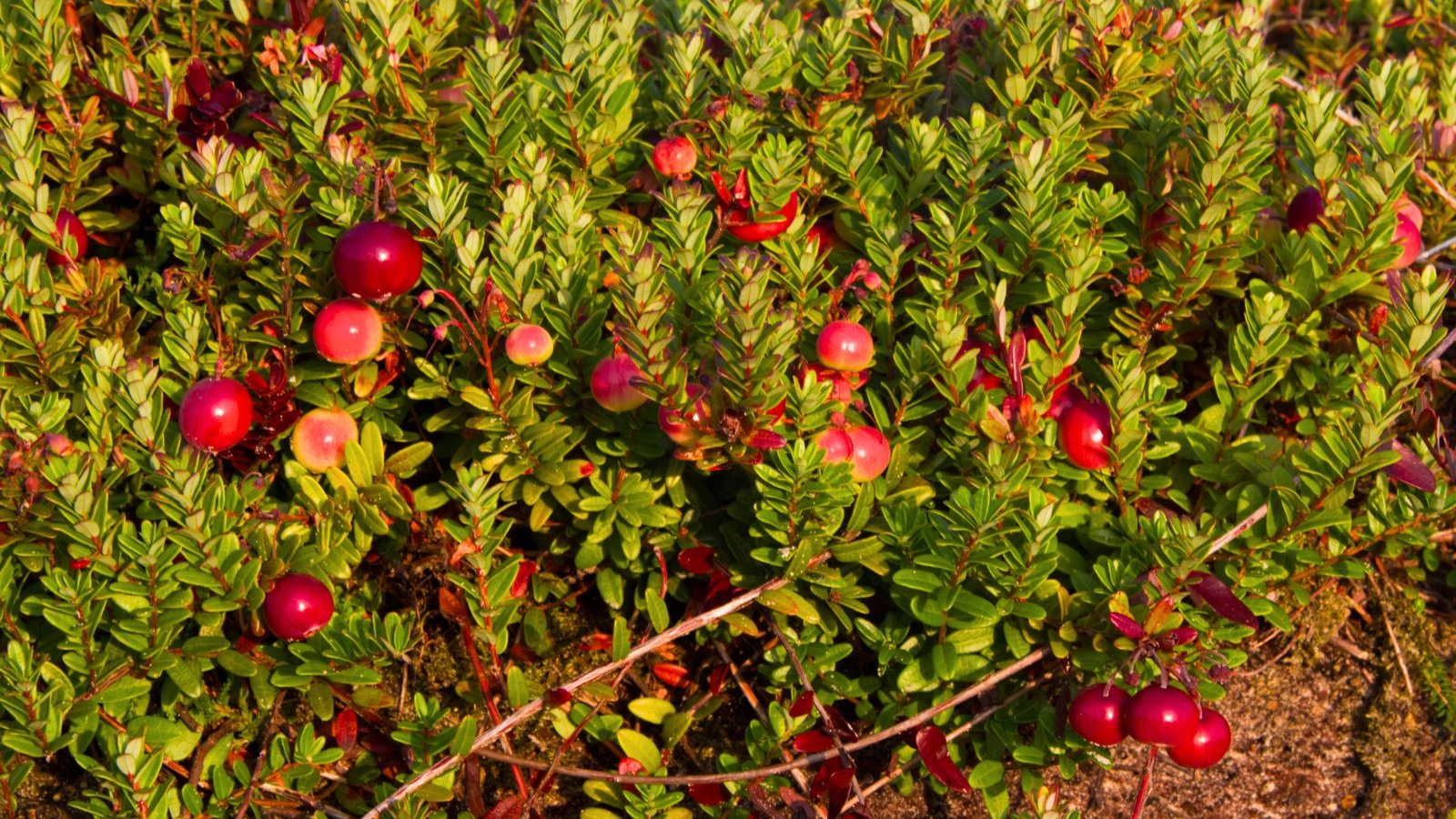
|
|
botanical name Vaccinium macrocarpon ‘Pilgrim’ |
|---|---|
|
|
sun requirements Full sun |
|
|
height 1′-3′ |
|
|
hardiness zones 3-7 |
Cranberries are a useful fruit that are good for digestive health, immune support, and a lot of other important functions. They’re also an important part of many holiday menus. They prefer cool climates, plenty of moisture, and acidic soil.
Crans mature in the fall, turning a deep, rich ruby tone. Add plenty of organic material to their soil to maintain the acidity. Don’t forget to give these plants a lot of water. They like consistent moisture.
‘Pilgrim’ is creeping and forms a dense mat. It makes a good ground cover. It’s a North American native that feeds pollinators and birds and is evergreen, so it looks wonderful even in the winter.
Goji ‘Phoenix Tears’
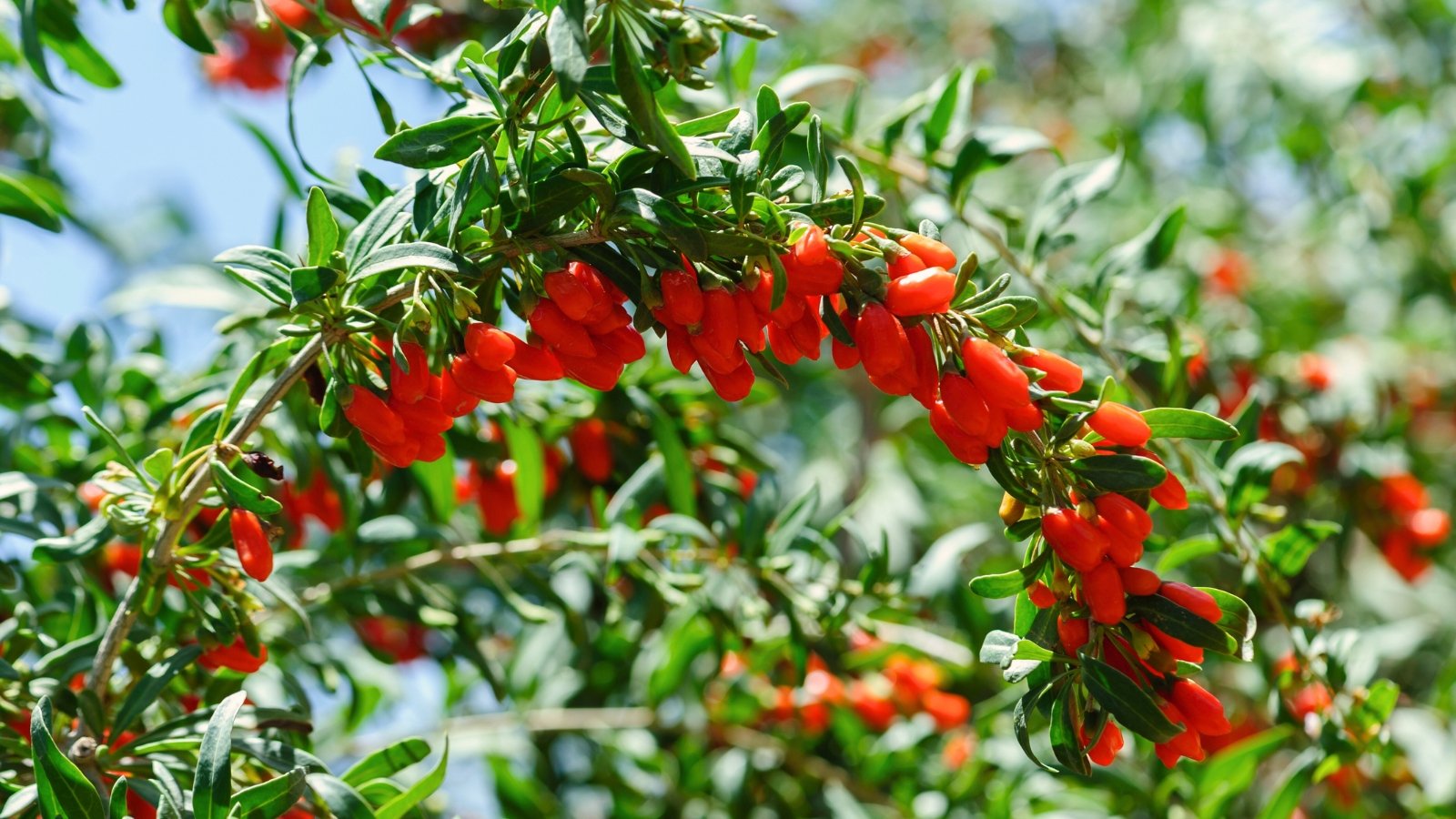
|
|
botanical name Lycium barbarum ‘Phoenix Tears’ |
|---|---|
|
|
sun requirements Full sun to partial shade |
|
|
height 6’-10’ |
|
|
hardiness zones 4-9 |
This shrub is native to China and goes by many names. We know it as goji, and it produces some seriously powerful superfruits. It’s deciduous and reaches about ten feet tall at maturity. It produces pretty purple flowers that entice pollinators, followed by small, elongated red fruits.
Goji bushes are tolerant of a wide range of conditions. They like a lot of light and don’t mind cold and heat. It’s in the Solanaceae family, which are notoriously heavy feeders, so be sure to fertilize well.
‘Phoenix Tears’ is slightly less cold tolerant than most, preferring zones 5-9. The berries are sweet and full of antioxidants, amino acids, and even a significant amount of protein! They’re tasty dried lake raisins or tossed into your smoothie for a nutrition boost.
Boysenberry ‘Newberry’

|
|
botanical name Rubus ursinus x idaeus ‘Newberry’ |
|---|---|
|
|
sun requirements Full sun |
|
|
height Up to 6’ |
|
|
hardiness zones 5-10 |
Boysenberries are a hybrid from crossing raspberries with blackberries. They carry wonderful traits from both parents. They are sweet and floral with a tangy wildness and grow on a rambling vine.
Boysens have a short season and ripen between late May and early July. They are delicate, so you won’t often find them in stores. You may happen upon them at the farmer’s market, but the best way to enjoy this fruit is to grow it in your own garden.
‘Newberry’ is a vigorous vine that produces a large quantity of fruit. They are large, sweet, and bountiful, and the plants are disease-resistant.
Lingonberry ‘Koralle’
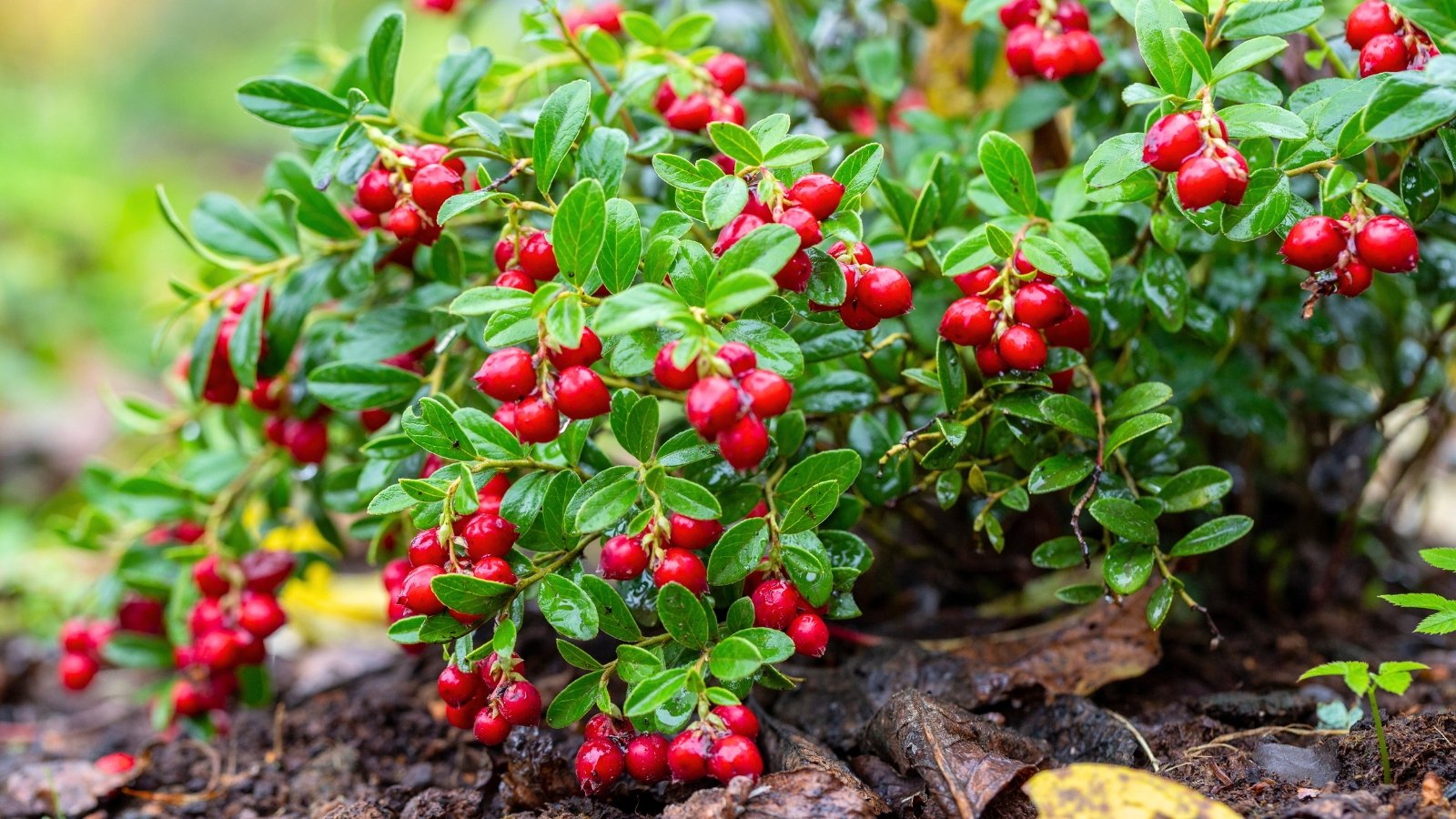
|
|
botanical name Vaccinium vitis-idaea ‘Koralle’ |
|---|---|
|
|
sun requirements Full sun to partial shade |
|
|
height 1’ |
|
|
hardiness zones 3-7 |
These hardy berry bushes are perfect for planting this spring. They are well-suited to cooler climates and play a starring role in many Nordic recipes. They are low-growing shrubs that fit into smaller spaces and have attractive, neat, rounded foliage.
Lingonberries have a bright and tangy flavor, so they are typically not eaten raw. However, they do make a pleasing tea and are delicious in jams, desserts, and syrups. They are also full of anthocyanins, important antioxidants that help protect our cells.
‘Koralle’ is a popular dwarf variety. In spring, it produces lovely pink blossoms that give way to brilliant red fruit. It stays close to the ground and makes an interesting ground cover.
Saskatoon Serviceberry ‘Regent’
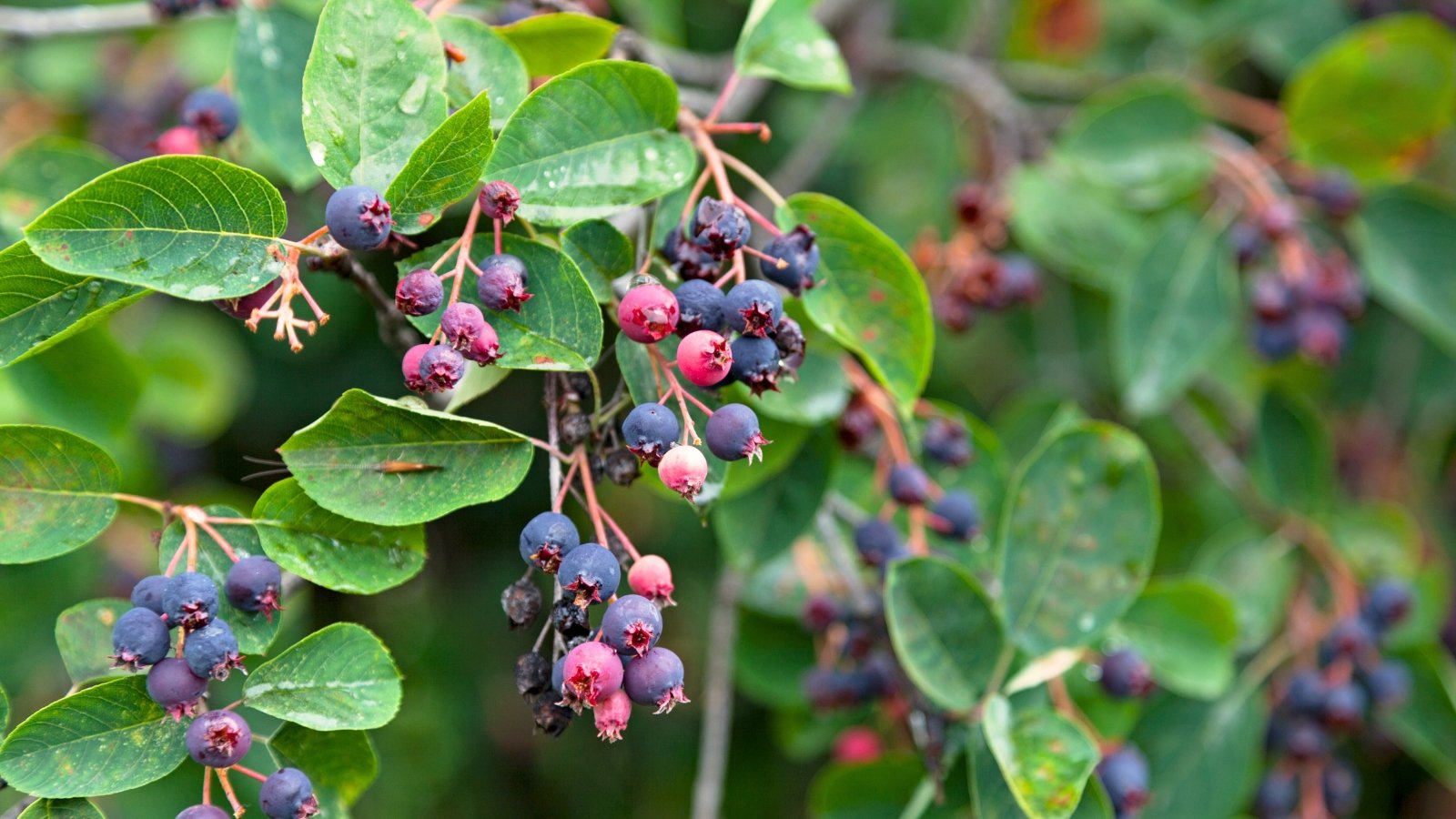
|
|
botanical name Amelanchier alnifolia ‘Regent’ |
|---|---|
|
|
sun requirements Full sun to partial shade |
|
|
height Up to 4-6’ |
|
|
hardiness zones 2-7 |
Serviceberry shrubs and trees are often admired for their brilliant autumn foliage. They turn gorgeous shades of red and orange before their winter dormancy. In the spring, they’re also lovely when covered in pretty white blossoms.
Though it often finds its use as an ornamental element, there is no denying it produces delicious fruit. The berries look like blues, and their flavor also hints at strawberries and sweet almonds.
‘Regent’ is a compact variety that blooms in April. Because it rarely grows taller than six feet, it fits nicely into smaller gardens. It’s not picky about soil or environment, and the fruit is good for cooking or eating fresh off the shrub.
Blackberry ‘Sweet-Ark™’
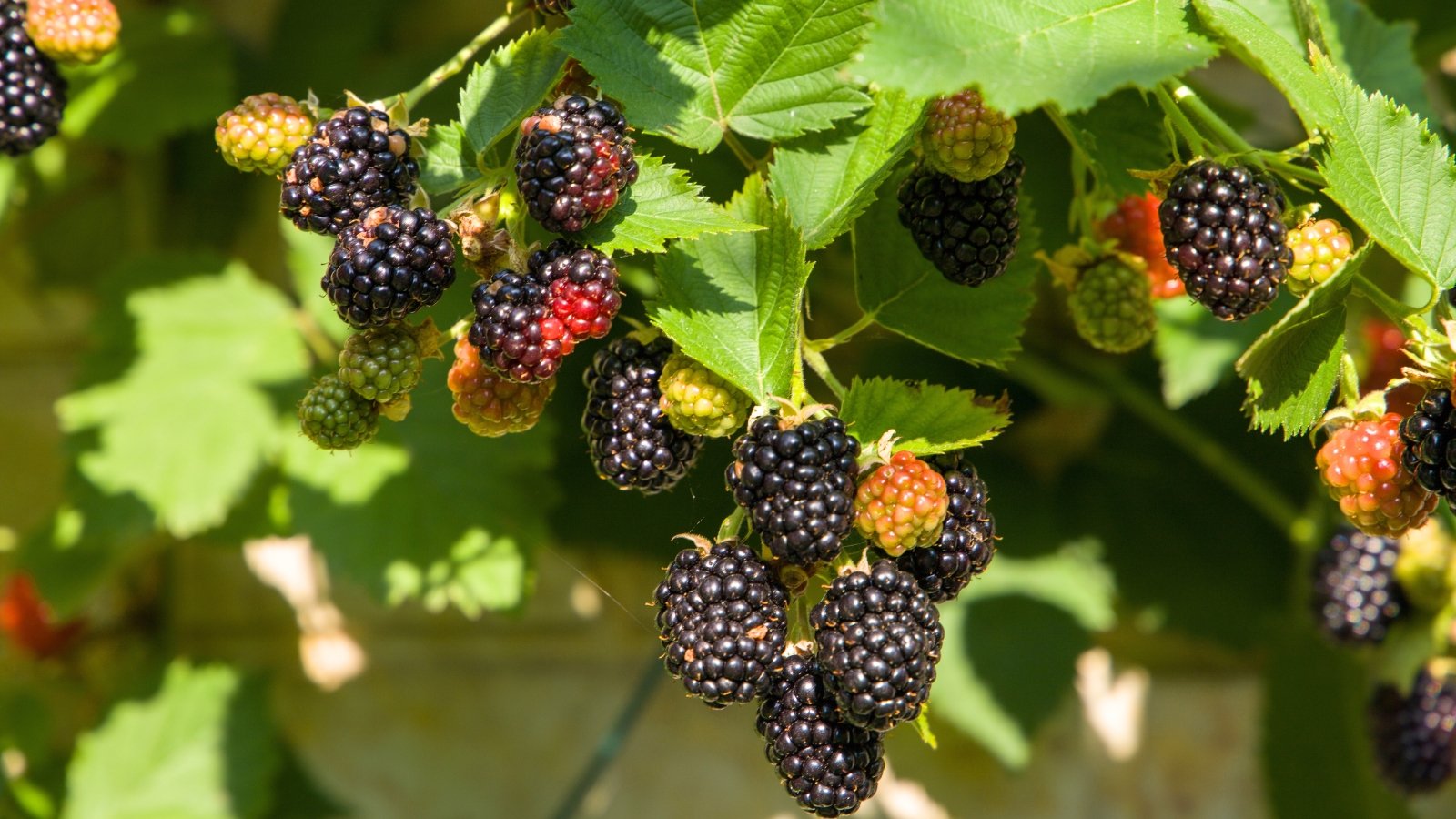
|
|
botanical name Rubus ‘Sweet-Ark™’ |
|---|---|
|
|
sun requirements Full sun |
|
|
height 4’-6’ |
|
|
hardiness zones 5-9 |
Blackberries are incredibly easy to grow and produce gorgeous, deep purple fruit. They are sweet with earthiness and make wonderful pies and preserves. There are vining and upright cultivars, though the vining types are not often commercially available.
‘Sweet-ark™’ originated at the University of Arkansas. This close relative of dewberries offers the flavor of wild fruit in a beautiful thornless shrub. In midsummer, it offers a high yield of medium to large, deep purple berries.
Blackcurrant ‘Ben Sarek’
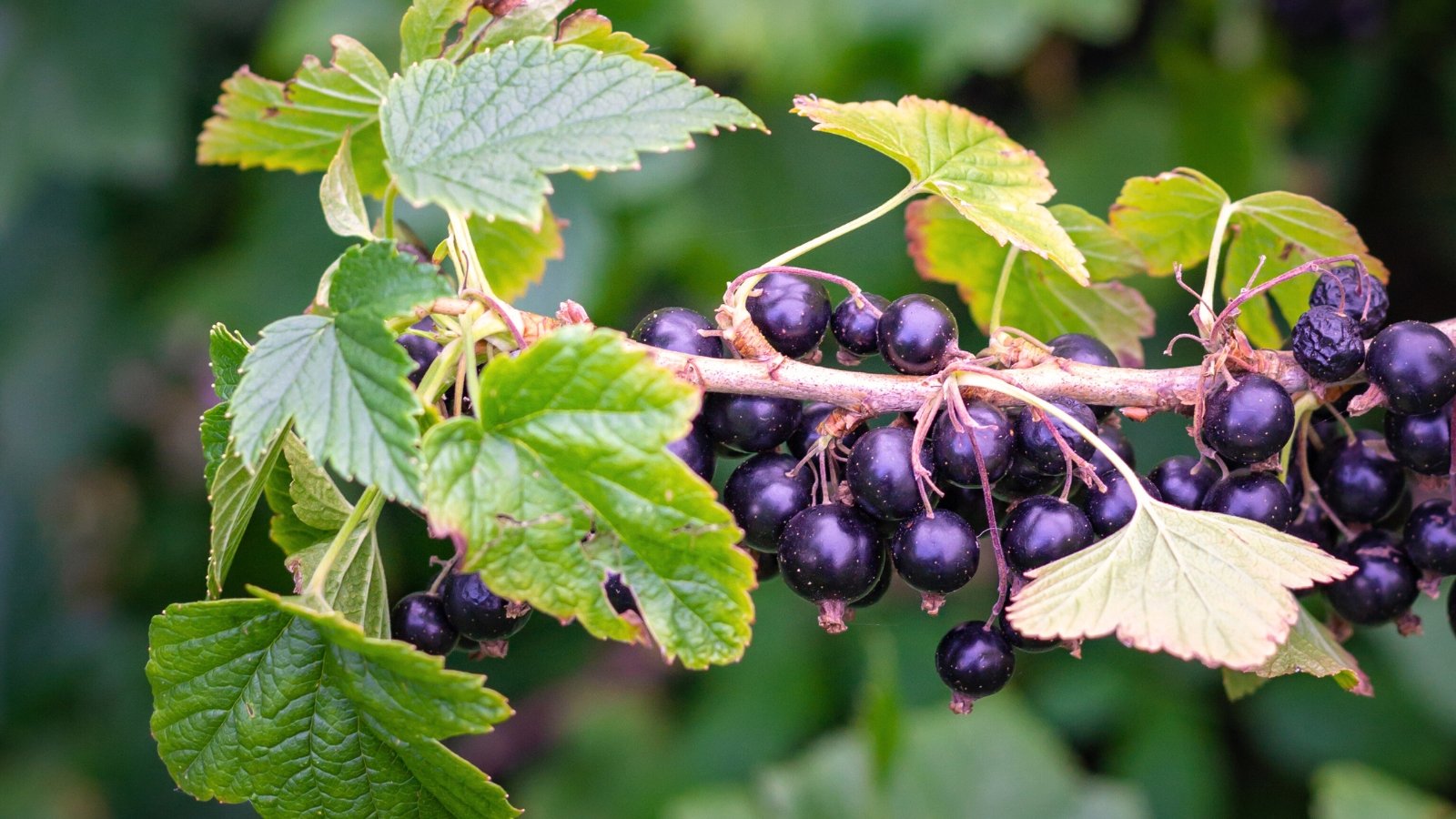
|
|
botanical name Ribes nigrum ‘Ben Sarek’ |
|---|---|
|
|
sun requirements Full sun to partial shade |
|
|
height 3’-4’ |
|
|
hardiness zones 3-8 |
Blackcurrants are deciduous shrubs that produce sweet, glossy, black fruit which ripens in summer. In spring, they bloom, covered in small green and pink flowers. You can eat the berries raw, but most often, you’ll find them made into preserves, syrups, and jams.
The plants are compact and fit well into any landscape. You can also grow these as container specimens. A mature bush will produce up to ten pounds of berries in a year.
‘Ben Sarek’ is a compact cultivar that grows only four feet tall. Plant these berry bushes in spring and wait until the following year for full establishment. In the spring, butterflies flock to it, and the foliage turns gold in autumn.
Red Currant ‘Red Lake’

|
|
botanical name Ribes rubrum ‘Red Lake’ |
|---|---|
|
|
sun requirements Full sun to partial shade |
|
|
height 3’-5’ |
|
|
hardiness zones 3-7 |
Red currants are comparable to blackcurrants in terms of care and environment. The main difference is the color of the berries. It produces greenish-pink blossoms, but rather than maturing to a deep purple, they turn ruby red.
Red currants are good for eating raw and for cooking and desserts. ‘Red Lake’ is another compact shrub that fits in well with any size garden. It’s also a winner of the Award of Garden Merit from the Royal Horticultural Society. It’s self-fertile, so one plant will produce fruit without a second pollinator cultivar.
American Elderberry
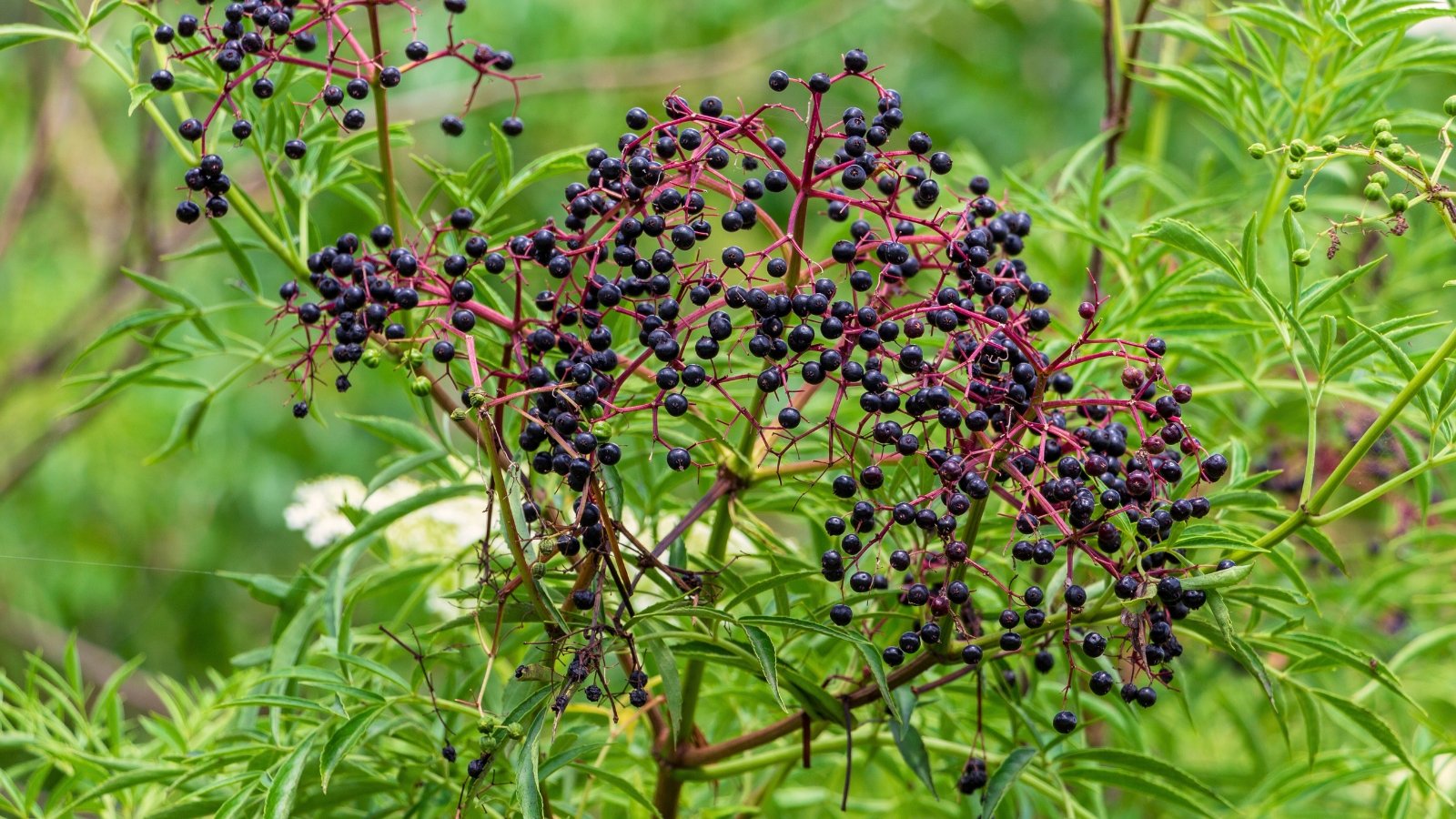
|
|
botanical name Sambucus canadensis |
|---|---|
|
|
sun requirements Full sun to partial shade |
|
|
height 5’-12’ |
|
|
hardiness zones 4-8 |
American elderberry is a beautiful shrub with a graceful open growth habit and fine, attractive foliage. In early summer it produces lacy clusters of fragrant white flowers in mass quantities. These give way to small fruits which mature to a rich shade of purple, nearly black.
Elderberry shrubs are great for wildlife enthusiasts. They attract a wide range of bird species and pollinators. The fruit is great for making syrups and wine. There is some evidence suggesting that they have excellent immune-boosting properties.


